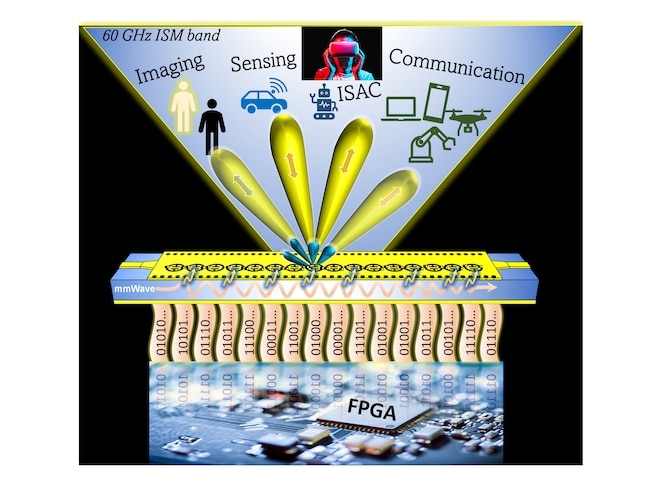
The first-ever 60 GHz DMA could be used for future 6G network communications. (Image Credit: University of Glasgow)
Now that 5G is being deployed worldwide, efforts have shifted toward creating the next-gen communication tech. University of Glasgow researchers developed the world's first 60GHz mmWave digitally programmable dynamic metasurface antenna (DMA) prototype controlled via a field-programmable gate array (FPGA). It's designed for reliable, ultra-fast 6G network communications and can lead to new sensing, imaging, and communications applications. According to the university, the 60GHz mmWave band is part of the spectrum for industrial, scientific, and medical (ISM) applications.
"In recent years, DMAs have been demonstrated by other researchers around the world in microwave bands, but our prototype pushes the technology much further, into the higher mmWave band of 60 GHz," said Qammer H Abbasi, a professor of Applied Electromagnetics and Sensing at the University. "That makes it a potentially very valuable stepping stone towards new use cases of 6G technology and could pave the way for even higher-frequency operation in the terahertz range."
The DMA operates at such a high frequency because it features fully adjustable metamaterial elements engineered to manipulate electromagnetic waves via software control. It also has high-speed interconnects capable of simultaneous parallel control of metamaterial elements via FPGA programming. Additionally, the 60 GHz antenna shapes its communication beams and generates multiple beams simultaneously, providing stable network coverage by switching in nanoseconds.

The team believes the DMA has imaging, sensing, and communication applications. (Image Credit: University of Glasgow)
Potential use cases include patient monitoring/care, which keeps track of a patient's movements and vital signs. It can also be integrated into sensing and communications devices for high-res radar. Self-driving vehicles and drones can use the DMA for safe road and air travel. By boosting the data transfer speed, the DMA may assist with producing holographic images of humans or objects projected anywhere in real-time.
"6G has the potential to deliver transformative benefits across society. Our high-frequency intelligent and highly adaptive antenna design could be one of the technological foundation stones of the next generation of mmWave reconfigurable antennas. The programmable beam control and beam-shaping of the DMA could help in fine-grained mmWave holographic imaging as well as next-generation near-field communication, beam focusing, and wireless power transfer," said Dr Masood Ur Rehman. "We'll work toward the extension of this design in the near future to offer more flexible and versatile antenna performance and continue to play our part to meet the needs of our increasingly connected smart world."
Have a story tip? Message me at: http://twitter.com/Cabe_Atwell
